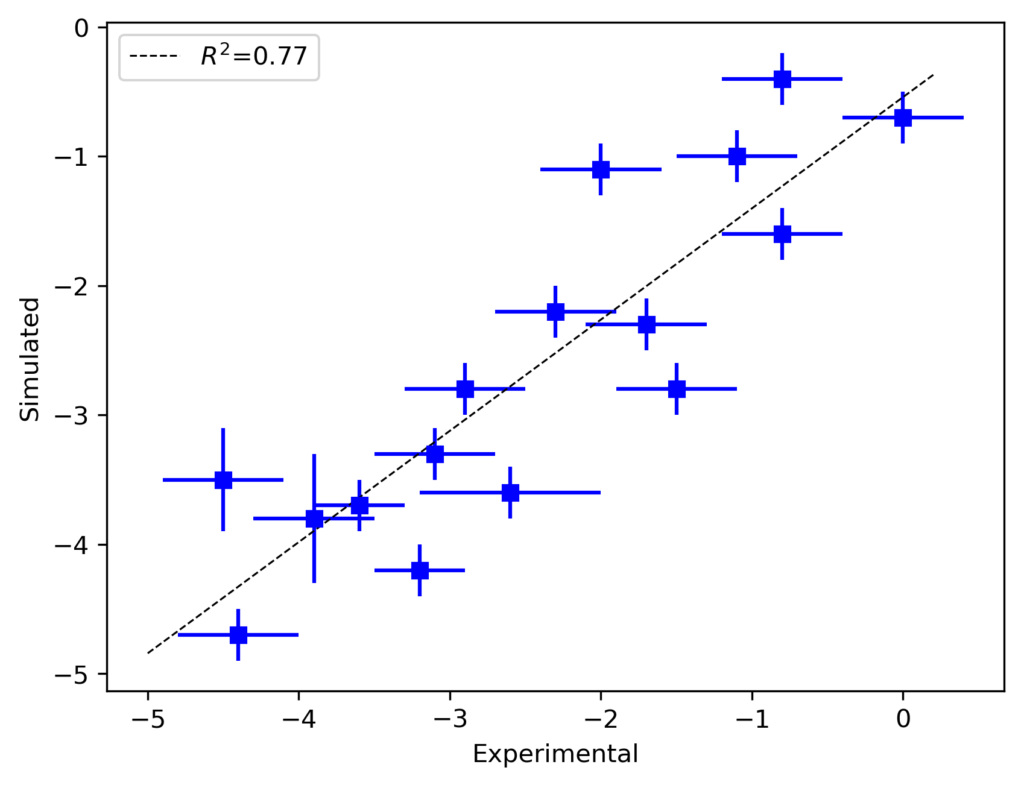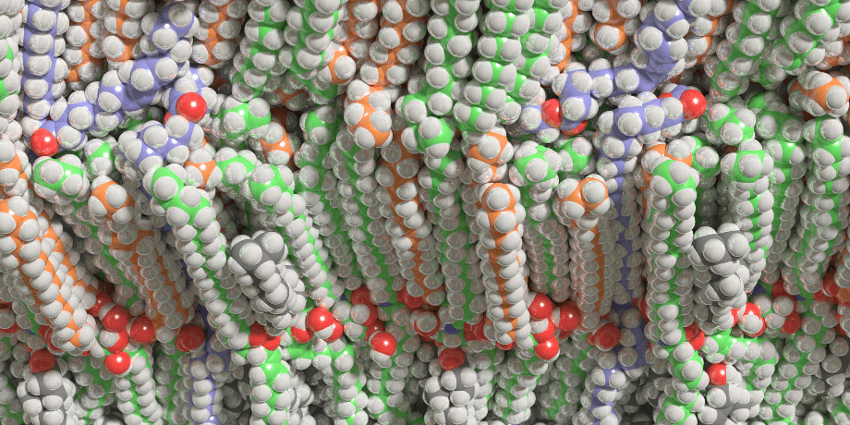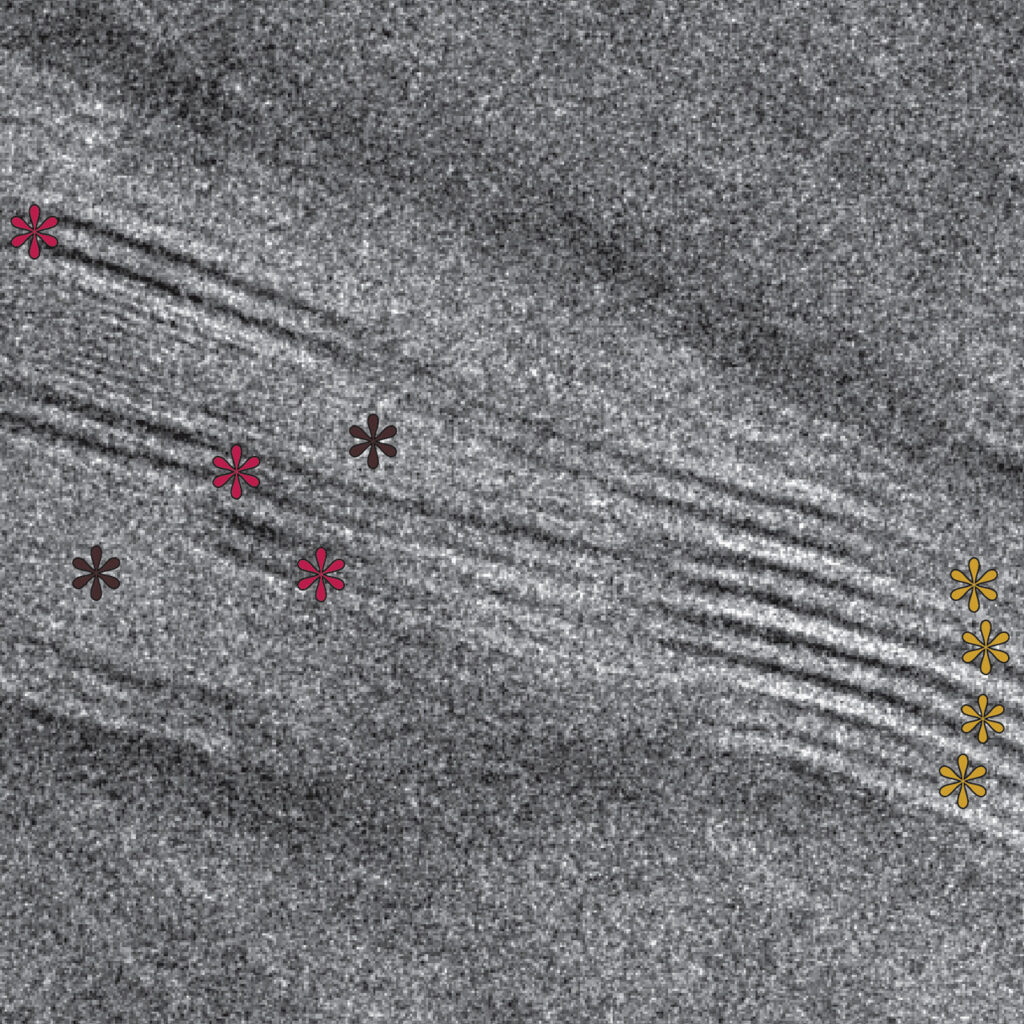Our technology
Based on high quality cryo-EM data from human skin we have developed a patented atomistic model of the extracellular lipid structure in stratum corneum, the outermost layer of the epidermis. We use molecular dynamics simulation to calculate how permeants (or APIs), as well as excipients in a formulation, interact with the lipid barrier structure. We can also simulate how a modified formulation composition affects the solubility of APIs and excipients.
→ Skin barrier model
→ Molecular dynamics simulation
→ Permeability calculations
→ Formulation properties

All approaches at a higher level are suspect until confirmed at the molecular level.
Francis Crick

Skin barrier model
Our proprietary, patented, skin barrier model reproduces high-quality near-native CEMOVIS (Cryo-Electron Microscopy of Vitreous Sections) images of the extracellular lipid arrangement in human skin. The molecular arrangement is also in compliance with electron micrographs from RuO4 stained mouse skin.
Molecular dynamics simulations of heating the skin barrier model is in agreement with published thermotropic behaviour and the calculations of the permeability coefficient using the barrier model agrees with published ex vivo data.
Molecular dynamics simulation
MD simulations are fundamental to our research. They enable explaining observations from the laboratory at an atomistic level of detail and at time scales that complement what is commonly accessible experimentally.
The calculations are based on Newton’s laws of motion with integration steps in the low femtosecond range. The simulations are performed at set temperatures and pressure and routinely reach microsecond lengths. Experimental observables can be extracted and free energy differences can be derived. The simulations can be accelerated by applying biases to efficiently access rare states.
We are involved in the development of the popular GROMACS MD simulation software package.

Permeability calculations
Permeability through a barrier system can be calculated from molecular dynamics simulations. Our calculations show good correlation with experimental ex vivo results.
Our calculations also let us predict the partitioning of formulation excipients into the lipid barrier and also where in the barrier system they are most likely to go. In turn, this allows predicting how they affect the lipid barrier as well as the permeability of compounds of interest. Based on what parts of the lipid barrier are slowest to penetrate it is possible to suggest formulation excipients that are most effective in those regions.
Formulation properties
The difference in solubility of a formulation component, when modifying the composition of a formulation, can be estimated from the free energy changes. A high solubility of the active compound (API) is important to achieve a high flux. On the other hand, a too high solubility can restrict the permeability due to the large relative free energy barriers. This can help decide, e.g., how high ethanol concentrations are optimal in a formulation.
The effect of permeation enhancing excipients depend on the difference in free energy (the partition coefficients) between the lipid barrier system and the formulation.
The changes in free energy, when modifying a formulation, can be calculated using MD simulations.

Highlighted publications
-

Predicting drug permeability through skin using molecular dynamics simulation
-

Human skin barrier structure and function analyzed by cryo-EM and molecular dynamics simulation
-

Molecular reorganization during formation of the human skin barrier studied in situ